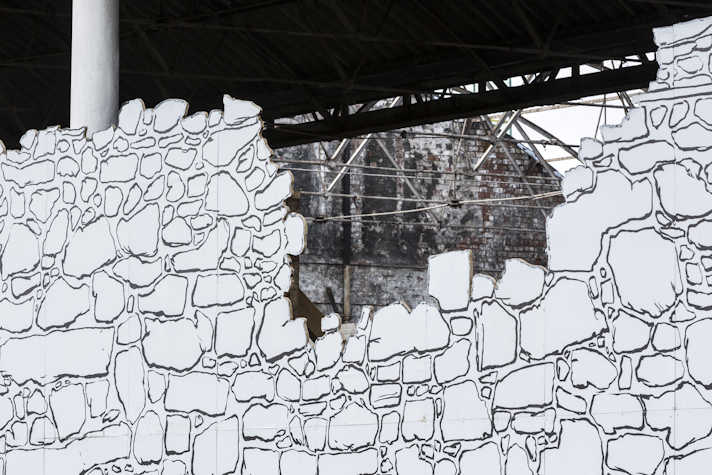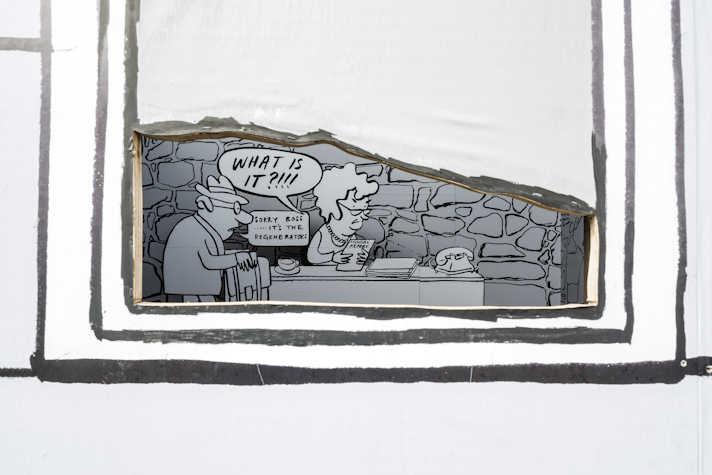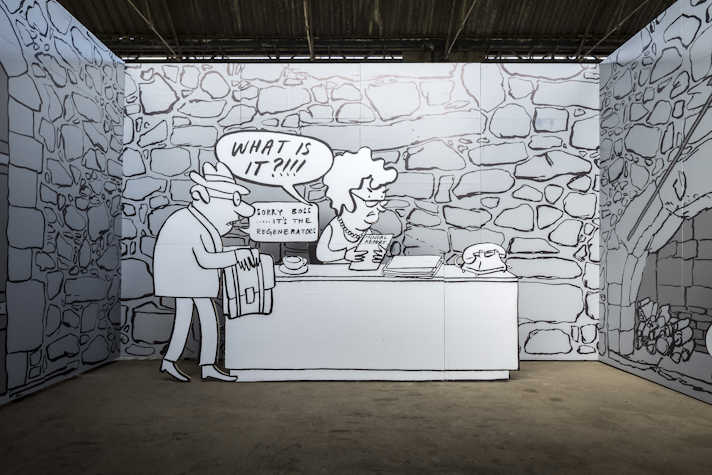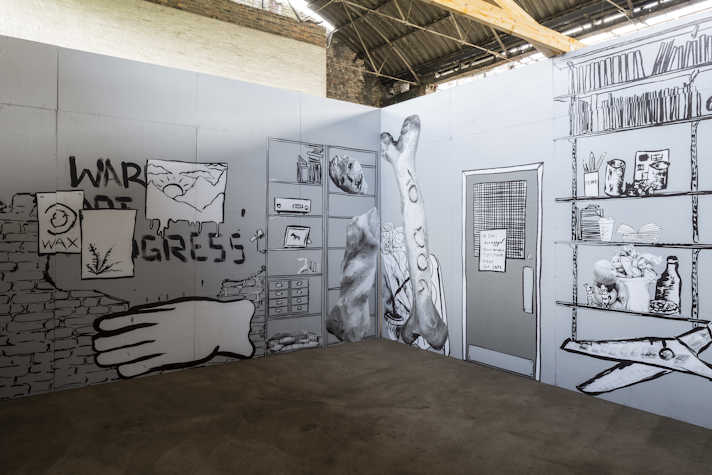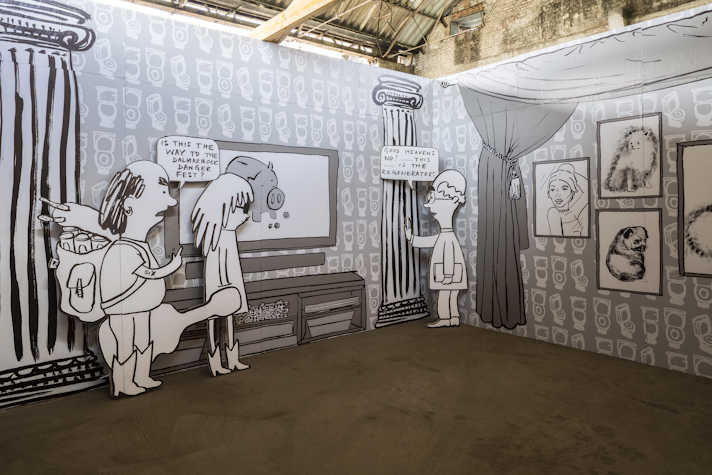The Regenerators
Dalmarnock Gas Purifier Shed
Mick Peter is an artist who makes playful work that investigates the symbols of power and authority using satirical and witty illustrations.
For this ambitious new work Peter, together with young people from across Greater Glasgow, created a 90m long ‘billboard’ to cover the empty façade of a historic former gas-purifying shed in the East End of the city, in celebration of Scotland’s Year of Young People. The new hoarding depicted, in drawings reminiscent of a newspaper strip cartoon, crumbling buildings from different eras, including a medieval castle, tenement housing, as well as modern flats in the process of being demolished. Peering through the windows of these buildings, visitors could see surprising and humorous scenes made by Peter and the young people, who had also imagined what public art might look like for the site. A solitary piece of ‘public sculpture’ would be wheeled out ceremoniously each day before being returned to its lockup behind the façade.
The project was intended to create a thought-provoking doubletake on the hoardings that surround building sites whilst inviting us to consider Glasgow’s architectural history and the loaded nature of the transformation of its industrial built heritage. The young people’s participation in the project was led by a core curatorial group of students from Glasgow School of Art’s Widening Participation team. These were: Luke Andrew, Caitlin Callaghan, Shannan Flockhart, Thomas Whiting, Fraser Whiting, Teagn Duffy and Kirsten McNairn.
Commissioned by Glasgow International.
Supported by EventScotland as part of the Scottish Government’s Year of Young People 2018, Clyde Gateway, Festival 2018, Matic Media & Glasgow School of Art’s Widening Participation Department.



